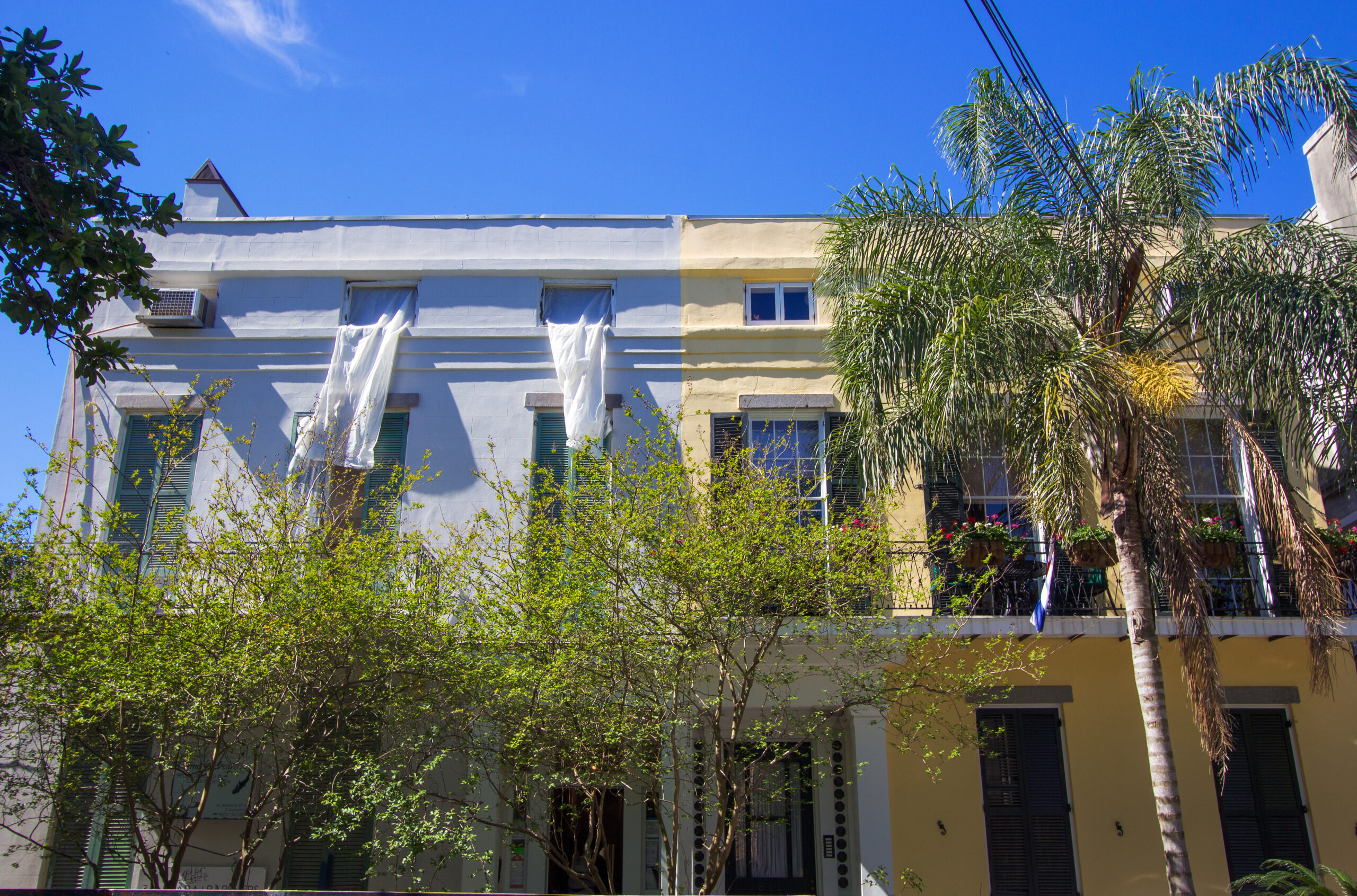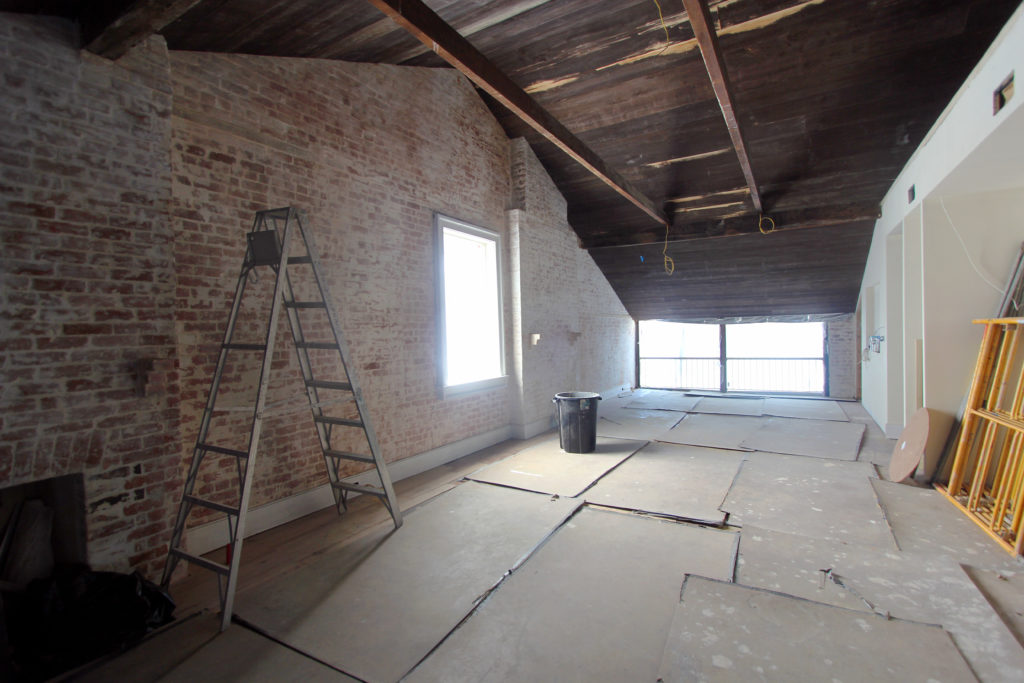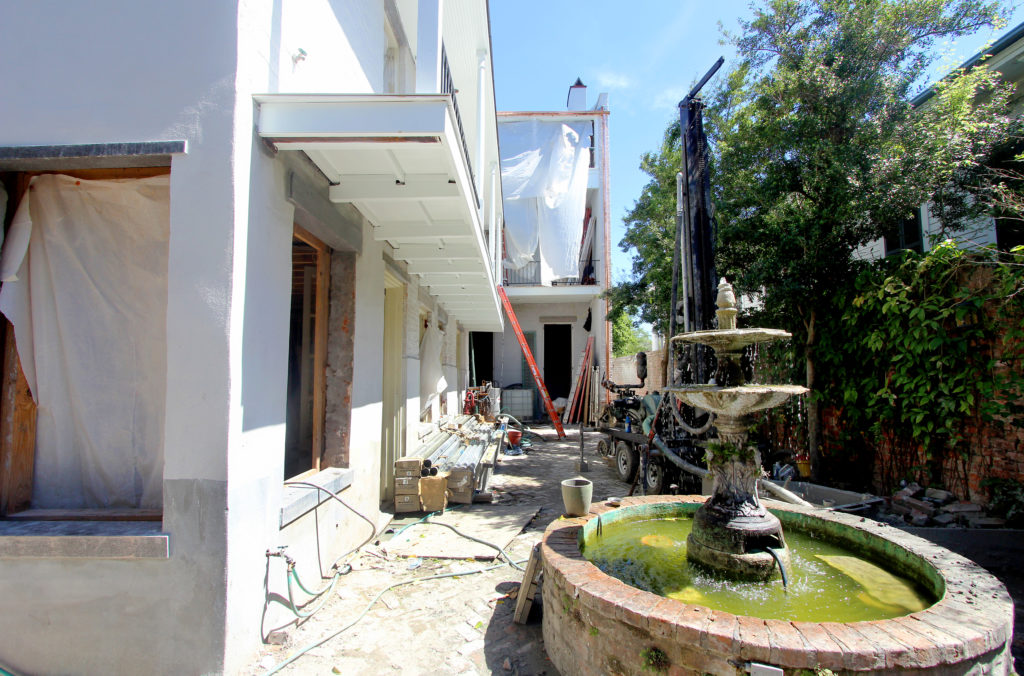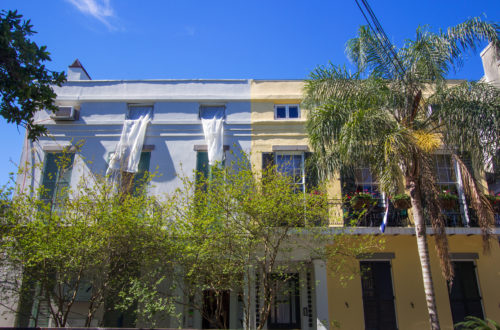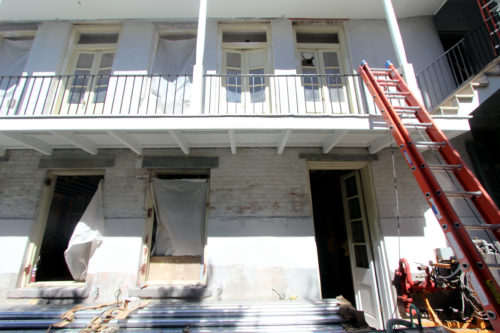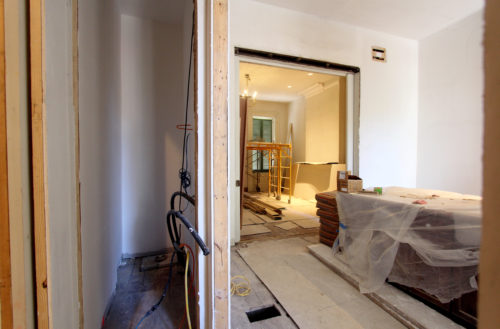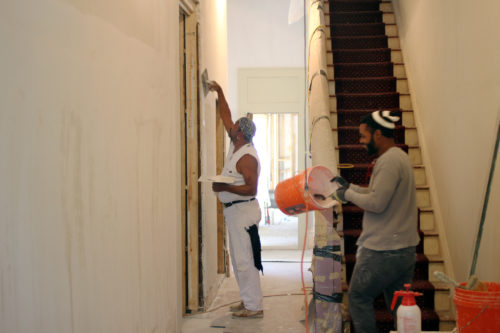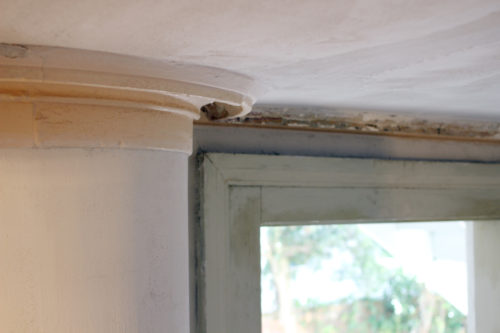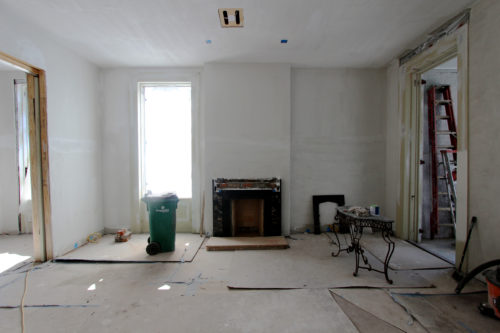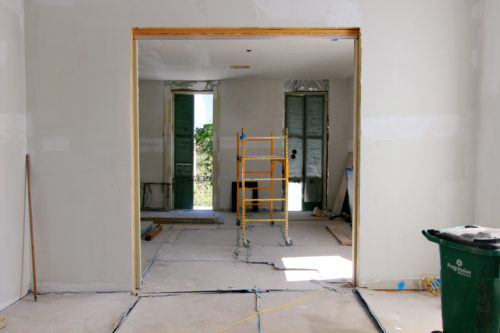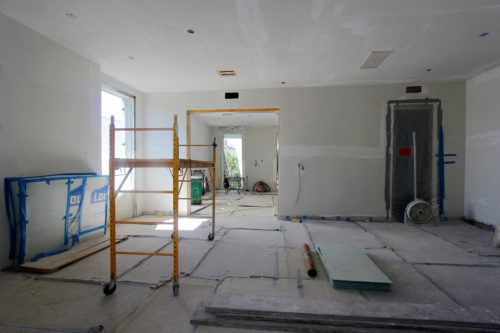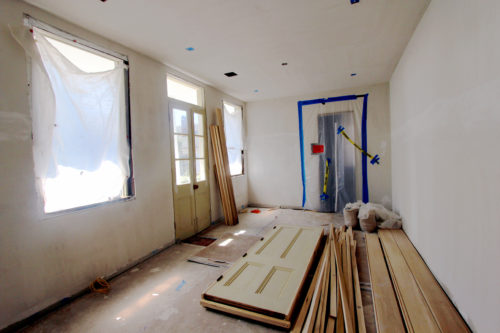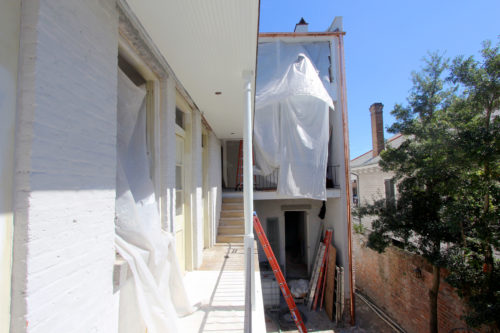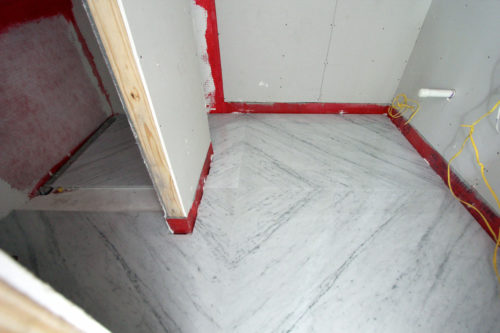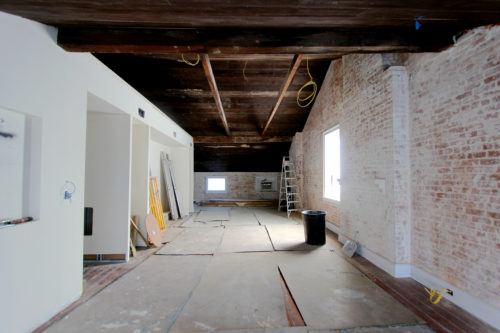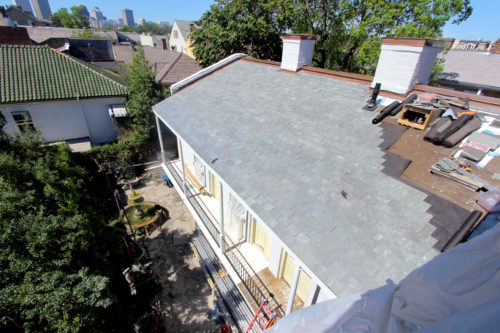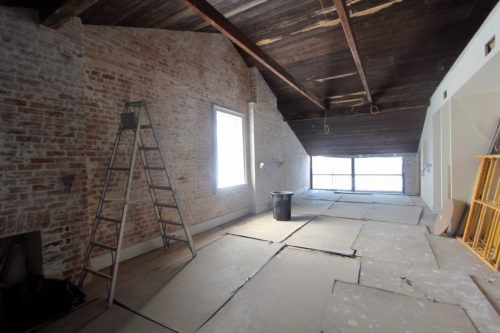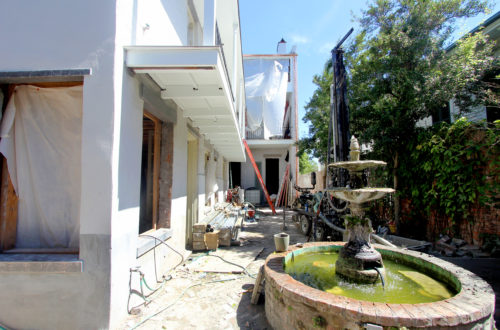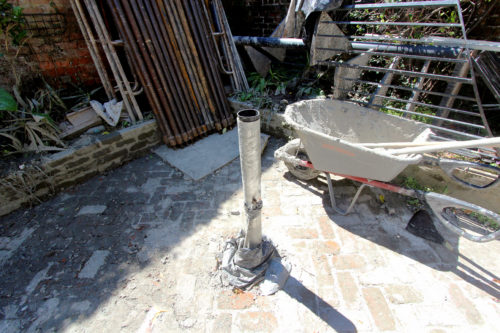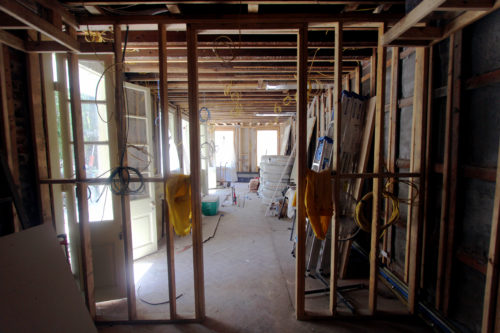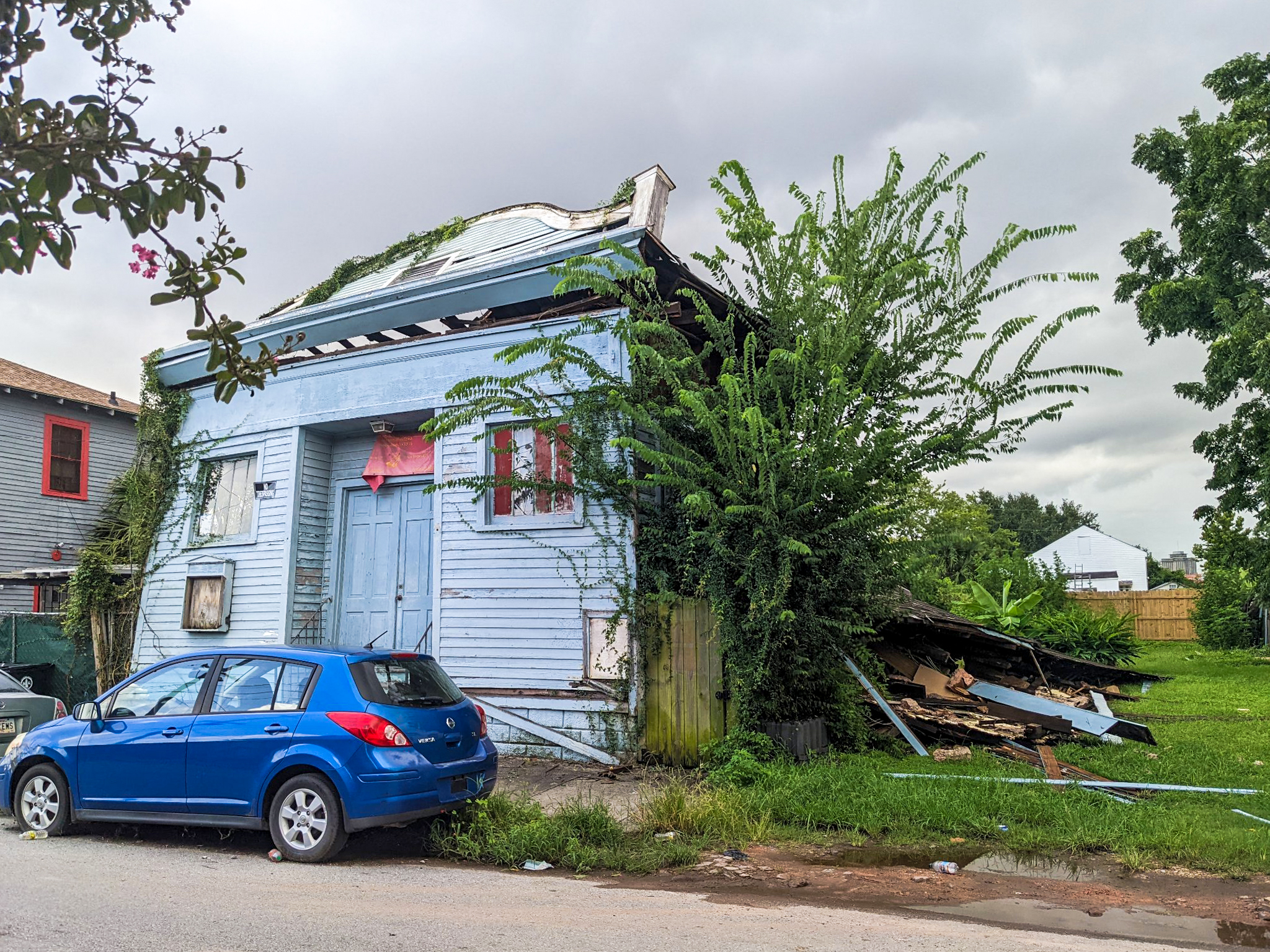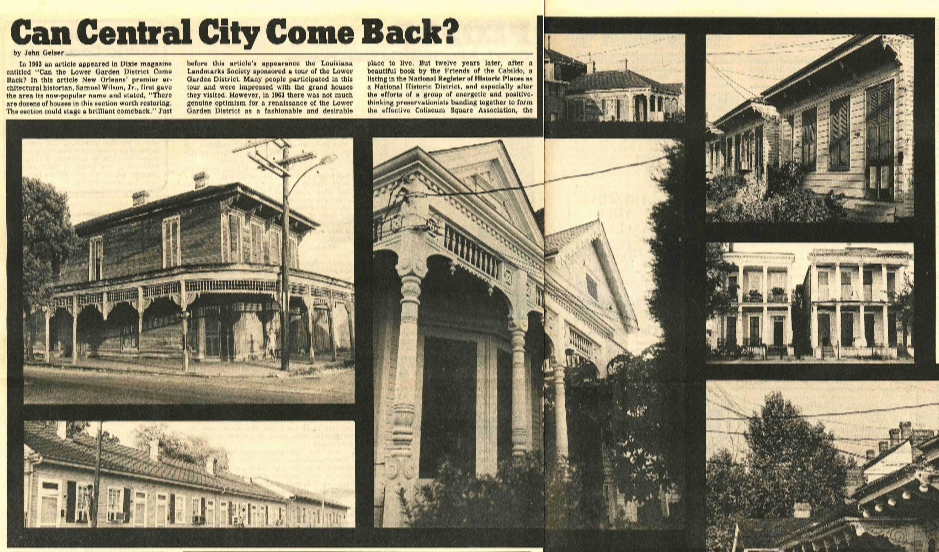Betsy Eberle Fifield is no stranger to architecture: the homes she designed for her family in New York City, constructed in three stories of airspace atop a historic structure in the Tribeca neighborhood, and in Aspen were so spectacular, they warranted features in Architectural Digest magazine. A London home was featured in World of Interiors, and another home in Mexico wasn’t publicized internationally, but was a construction project important enough to distract Fifield from her art career, after having shows in galleries in London and Aspen. In late December 2014, an article in the New York Times real estate section highlighting a Greek Revival-style townhouse in New Orleans caught Fifield’s eye. She lived in Aspen, Colorado, but had been visiting New Orleans since the 1990s. “I’m a music fan,” she said, “and I was fantasizing about getting something in the city. I had started to look a little, but not too seriously.” The townhouse at 810 Esplanade Ave. seemed too good to pass up, though, so Fifield asked local contractor and friend Andy Scott to check it out.
Soon, the two embarked on a business venture to restore the multi-family residence using historic rehab tax credits.
As it happened, this joint venture was a continuation of the building’s life as a rental property going back to the establishment of Esplanade Avenue. In 1832, William Montgomery, a businessman who had served under Andrew Jackson in the Battle of New Orleans, purchased the newly subdivided lots, which a only a handful of decades earlier had been land that had served as part of the city’s colonial fortifications. After securing the lots, Montgomery built pair of common-wall townhouses that are very early examples of the Greek Revival style that was taking off in popularity in New Orleans in the 1830s.
With the property secured, Fifield and Scott began the process of demolition. Five rental units had divided up the property for decades, and many of the home’s original details had been covered or altered. As they peeled away walls and finishes from more recent eras, the clarity of the original design and its remaining features came through. “The project dropped me to my knees,” Fifield said. “I have been humbled by it. It has been a whole different process doing historic renovation and preservation as opposed to building whatever you want.”
During the demolition process, “we began to follow the natural architectural lines of the building, uncovering beautiful details in the house that had gone unnoticed because it had been occupied by five units for generations,” Fifield said. Graceful curves in the staircase, original to its construction, were uncovered under layers of plaster. Nine fireplaces, most of them still operable, were revealed. Plaster medallions and other details languished, but their former glory could still be appreciated. Seeing the townhome’s original beauty uncovered, Fifield was moved to preserve all she could of the structure. “I felt it had to exist in its original architectural form,” she said.
The third-floor garret studio.
A significant turning point in the process was the discovery of a space that revealed itself only after all interior gutting was complete on the third floor. According to Scott, the attic turned out to be “a real garret” — just the kind of space that an artist like Fifield could use as a studio. She began to feel a connection to the house through the restoration process, and soon decided she would turn this nearly 180-year-old townhouse into a home for herself rather than returning it to the rental market as originally planned. As the basic concept crystallized, local architect Daniel Zangara of Zangara Partners was brought aboard to help her refine the plan and organize the project scope and objectives. “She challenged all of us at every turn to produce the best building possible,” Zangara said. Included in the project requirements was an overall imperative to maintain the integrity of the original structure while modernizing the systems inside: no ceilings were to be lowered, but the building would be as sustainable and healthy as possible, and all work would be guided by Department of the Interior Standards for the Treatment of Historic Properties.
This was no small project: the building is 4,965 square feet. In working out the renovation, the original layout was generally adhered to, with a couple of key changes. To fit an elevator into the building, the wall along the side hall was thickened to two feet. According to Scott, this modification was a singular solution to several problems. It provided space for the elevator shaft, mechanical closets, and ducts and pipes while also becoming an integrated feature in its own right by creating a vestibule-like passageway between the parlor and the hall. It also cleverly restores symmetry to the rear parlor’s slightly off-center pair of windows.
One other floorplan modification was needed. The original front parlor space, on the second floor, occupied the space behind all three front window bays; Fifield and Scott claimed the third bay for a master bath and dressing area. This intervention is not as out of character as it may initially seem, however. Cypress Building Conservation conducted a detailed analysis that revealed the presence of a cabinet, essentially a large built-in wardrobe, in the same location, suggesting that the traditional role for this zone of the building was more or less remaining unchanged.
The original service quarter building connects to the main house, and today holds the home’s kitchen. Fifield and Scott decided to locate an oven in the building’s original cooking stove; the rest of the kitchen was designed around this detail that melded new technology with historic placement.
Often, ceiling heights are lowered to be able to mask pipes, wires and ducts needed for modern amenities. To Fifield, this wasn’t an option. Keeping ceilings at full height required close coordination between all consultants and trades, primarily a willingness on the part of the contractor, HVAC tech and plumber to work cooperatively to come up with creative solutions. For example, Zangara, the architect, Scott, the contractor, and HVAC technician Raul Mena widened the wall between the front and back parlors to allow a duct to maneuver below the ceiling joist without lowering the ceiling.
Addressing potential moisture within the walls was another special challenge. When Scott pulled away the plaster and stucco to repoint the bricks, he discovered the mortar between the brick was so wet and soft, you could smear it with your finger. After the walls were allowed to dry out, the exterior wall was stabilized and re-plastered.
To further protect against future saturation issues and ensure appropriate breathability of the exterior masonry walls, Zangara called upon the technical know-how of building envelope consultant George Ferris of Alternative Energy Sources. Given the existing thermal mass of the walls — or their capacity to act as a buffer against heat and cold — and the imperative to appropriately manage moisture, Ferris recommend a less aggressive approach to insulation. At sun-exposed walls, a radiant barrier was installed to transfer incoming heat, increasing the home’s energy efficiency while also allowing it to “breathe.” At the roofline, instead of spray foam, Ferris recommended a formaldehyde-free, high-density, “cathedral” batt to be used with a layer of radiant barrier and a one-inch air gap between them. Like with the walls, this helps the home with climate control in an energy-efficient way.
A view from the back of the property.
Titan Construction put on the new slate roof, and Kendall Ward Masonry re-tucked pointed and stuccoed the brick. “After the demolition there was significant degradation of the mortar throughout the house due to moisture. Kendall really saved me,” Fifield said. Inside, work continued as PINTO Electric brought the building into the 21st century with necessary electrical wiring, and PEMBA brought on the luxury — the company hid wires to seamlessly bring state-of-the-art lighting, sound and technology systems into the home.
Once the exterior of the building was secure and interior system placements were complete, interior detail work could begin. Plasterer Jeff Poree was brought in to bring the surfaces of the rooms together with a Venetian plaster finish. This plastering technique consists of a pigmented “white” coat over a base coat on gypsum board. The “white,” or finish, coat includes pigmented lime mixed with Plaster of Paris, which is then troweled twice to achieve a lustrous burnished appearance. By reducing the need for paint on the interior, this technique not only provides long-term durability but supports healthy indoor air quality, as well. A team at New Orleans Millwork restored original moldings and millwork inside the home.
Restoring the home’s original doors and windows was another important component of the project. Courtney Williams of Cypress Building Conservation points out that proper window restoration is an inherently “green” practice. A properly restored window with operable shutters keeps out moisture and drafts just as effectively as modern factory-made windows. In terms of the restoration work itself, Williams is adamant that Cypress Building Conservation avoids the chemical bath process known as “dipping” at all costs and instead uses a heat gun for paint removal. Because old windows are made from extremely durable, densely grained wood, replacement of sash components is seldom required; however, when deteriorated material is found, Cypress Building Conservation opts to stabilize as much of the existing material as possible with Department of the Interior-approved epoxies and resins.
In addition to the restoration of these elements, Cypress Building Conservation wrote a social and architectural history of the house that Fifield described as vital to the home’s accurate restoration.
It could be argued that the courtyard functions as the second heart of the home, pulling together the main house and the service dependency around a serene outdoor space, complete with planters and fountain. The courtyard is also the heart of the home’s geothermal heating and cooling system. Unlike standard split system heat pumps, geothermal heat pumps do not require outdoor condensers — which are often noisy and unattractive — but instead rely upon deeply drilled wells. In the French Quarter, drilling such wells can pose a significant challenge, because the spaces are so tight it is rarely possible to get a standard drilling into the courtyard of a property. HVAC contractor Raul Mena, however, had a trick up his sleeve: a custom drill rig of his own design can navigate tight French Quarter spaces, bringing geothermal technology to places never before thought possible.
Inside the building, the geothermal system provides excellent dehumidification and cooling in the summer and equally efficient heating in winter. This is an especially important advantage in an older building because it can compensate for the limitations of a building that cannot be sealed and insulated to modern standards. It also translates into more compact ducts and air handlers, all of which allow the historic fabric of the building to take center stage while the technology fades discretely into the background.
“When it’s done, I think this house is going to be something of a model for the preservation of a house while simultaneously updating it for contemporary lifestyle,” Fifield said. “It’s quite open, so you can see the historic architecture, but it will be lived in in the way modern people live in their homes.” She plans to decorate the space with both classic and contemporary furnishings, but only “sparsely,” so as to let the architecture itself shine.
Fifield used to work in advertising and in cosmetics, and long ago left office life, but is still constantly working, she said. This, her sixth personal architectural project, has been the most challenging; she looks forward, when 810 Esplanade Ave. is complete, to hosting friends and family so that they too can share in her love of New Orleans, and her special new home. She also plans to spend plenty of time finding creative inspiration in her garret studio.
Join us for a Renovator’s Happy Hour at 810 Esplanade Ave. on Thursday, May 18
Photos by Liz Jurey




